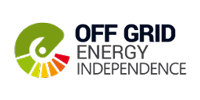
The mounting challenge of lithium-ion battery recycling should be addressed at the design stage. To date, though, manufacturers have focused more on safety, power density, and cyclability.
Lithium-ion battery recycling researchers from the universities of Leicester, Newcastle and Birmingham; The Faraday Institution; the ReCell Center and the Argonne National Laboratory have examined product design and published their findings in the paper The importance of design in lithium-ion battery recycling – a critical review, published in Green Chemistry.
“To create a circular economy for any material, it is important to have few components, a lower cost for the secondary process [recycling] than the primary process [raw material extraction], a simple purification flowsheet, valuable components, and a collection and segregation mechanism,” wrote the authors. “It also helps when the material has a significant environmental impact if not recycled, as this tends to mandate its recycling.”
Lead-acid
Lead-acid batteries fulfill those design requirements, which explains a collection rate of near 100% in Japan, the U.S. and most of Europe and a recycling regime which recovers more than 98% of the total mass of the batteries. Lead-acid batteries are straightforward in design, with a polypropylene casing, an electrolyte, and two electrodes, made from lead and lead oxide. Separating components by density is relatively simple given lead and polypropylene have values of 11.3 and 0.9g/cm-3.
The similar density values of the cathodes and current collectors in lithium-ion batteries renders a similar approach impossible. Therefore, lithium-ion devices require approaches such as redox reactions, solubility, or exploiting electrostatic and magnetic properties to separate the materials of which the cells are made up.
Lack of labeling is another significant obstacle to an effective recycling regime. Unlike lead-acid batteries, lithium devices show a variety of chemistries and architectures, such as NCA, NMC, LMO, LCO, and LFP batteries, all of which can combine in different chemistries. Cells can also come in pouch, prismatic, or cylindrical form before being soldered together into modules and combined in the pack.
read more










